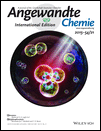Sol Processing of Conjugated Carbon Nitride Powders for Thin-Film Fabrication†
This work was financially supported by the National Basic Research Program of China (2013CB632405), the National Natural Science Foundation of China (21425309 and 21173043), the State Key Laboratory of NBC Protection for Civilian (SKLNBC2013-04K), and the Specialized Research Fund for the Doctoral Program of Higher Education (20133514110003).
Graphical Abstract
Going strong: Sol engineering of graphitic carbon nitride solids with strong oxidizing acids (e.g. HNO3) generates a stable colloidal suspension, which can be translated into thin films by dip/disperse-coating techniques. The polymeric matrix and the reversible hydrogen bonding result in the thin-film electrodes derived from the sol solution having high mechanical stability with improved conductivity for charge transport.
Abstract
The chemical protonation of graphitic carbon nitride (CN) solids with strong oxidizing acids, for example HNO3, is demonstrated as an efficient pathway for the sol processing of a stable CN colloidal suspension, which can be translated into thin films by dip/disperse-coating techniques. The unique features of CN colloids, such as the polymeric matrix and the reversible hydrogen bonding, result in the thin-film electrodes derived from the sol solution exhibiting a high mechanical stability with improved conductivity for charge transport, and thus show a remarkably enhanced photo-electrochemical performance. The polymer system can in principle be broadly tuned by hybridization with desired functionalities, thus paving the way for the application of CN for specific tasks, as exemplified here by coupling with carbon nanotubes.





